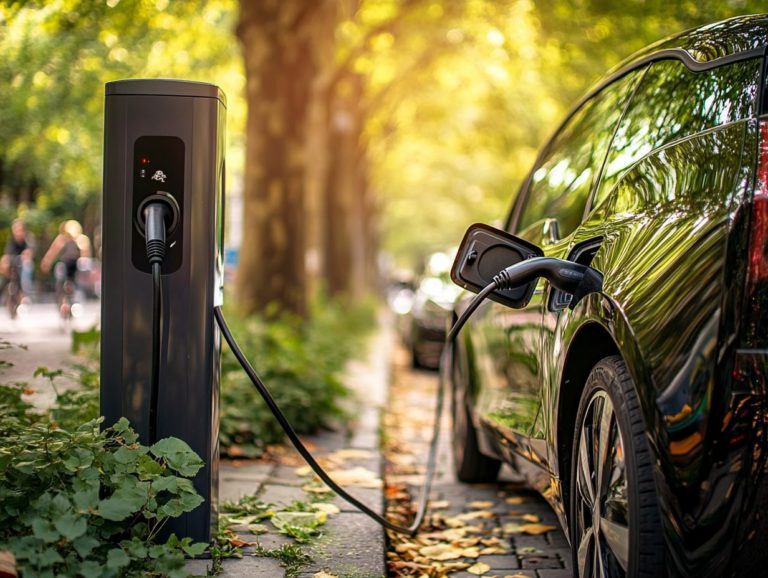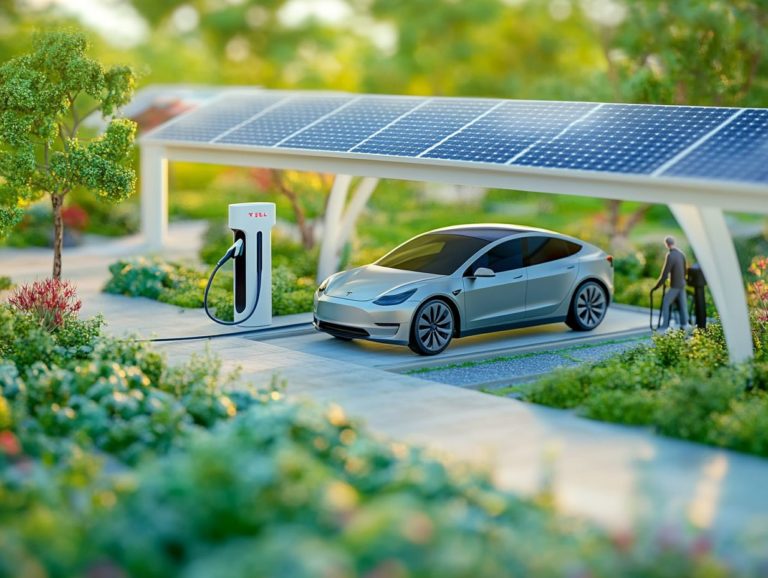Electrification and Its Effect on Urban Sustainability
Electrification is a transformative force. It reshapes cities and enhances sustainability.
This article explores what electrification truly means, tracing its historical roots to highlight its vital role in urban development. You ll learn about its positive impact on the environment and the economy while addressing the challenges it presents.
By examining current trends, innovative technologies, and effective implementation strategies, you will gain insights into the future of electrification and its potential to foster sustainable urban living.
Prepare to uncover the multifaceted impact of electrification on urban landscapes.
Contents
- Key Takeaways:
- Understanding Electrification
- The Impact of Electrification on Urban Sustainability
- Current Trends in Electrification
- Implementing Electrification in Urban Areas
- Future Outlook and Potential for Sustainable Development
- Frequently Asked Questions
- What is electrification and how does it relate to urban sustainability?
- What are some examples of electrification in urban areas?
- How does electrification help reduce air pollution in cities?
- What challenges does electrification face in urban areas?
- How does electrification promote economic growth in cities?
- What long-term benefits does electrification offer for urban sustainability?
Key Takeaways:
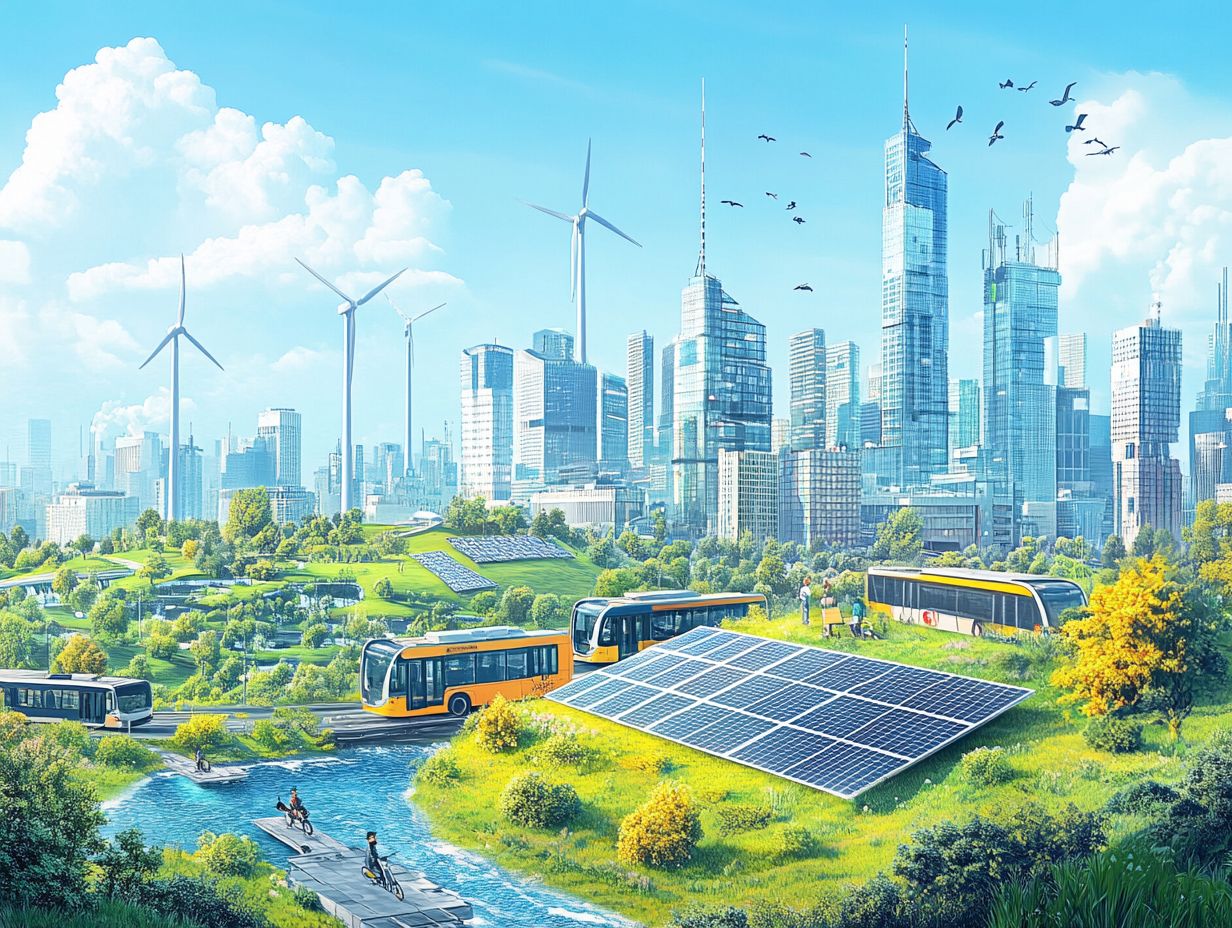
- Electrification has a long history and is essential for modern society.
- It benefits the environment and economy but also presents challenges.
- Innovative technologies provide great opportunities for future sustainability.
Understanding Electrification
Electrification represents an important change as systems and buildings convert from fossil fuel heating to sustainable electric alternatives. This transformation is essential for tackling climate change and reducing carbon emissions, particularly in urban environments like New York City.
By embracing electrification, you enhance air quality and boost energy efficiency. You also support the use of heat pumps as clean energy sources. This effort is vital for vulnerable communities and those affected by pollution.
The Impact of Electrification on Urban Sustainability
Electrification is a cornerstone of urban sustainability. It ushers in changes that reduce pollution and stimulate economic development, especially in cities like New York, where charging infrastructure affects sustainability and environmental justice is crucial.
By adopting clean energy solutions, you can improve air quality, lower utility bills, and enhance energy efficiency. This proactive approach makes urban environments more resilient and better equipped to handle climate change challenges.
Positive Effects on Environment and Economy
The positive effects of electrification resonate in both environmental and economic spheres. It enhances energy efficiency and promotes clean energy adoption. This transition is not just a buzzword; it can create significant job opportunities, particularly in growing urban neighborhoods.
By embracing electric systems, cities can dramatically reduce greenhouse gas emissions, improve air quality, and foster sustainable lifestyles among residents all while making strides against climate change.
Take New York City as an example. The city has initiated various electrification efforts aimed at improving air quality by replacing fossil fuel-driven heating systems with electric heat pumps in residential buildings. This shift reduces harmful pollutants and creates job opportunities in the clean energy sector, generating roles in installation, maintenance, and technology development.
Additionally, cities like San Francisco have seen tangible benefits, reporting a decline in smog levels and related respiratory issues due to their electrification efforts.
These case studies illustrate the connection between environmentally sustainable practices and economic growth. They show how commitment to electrifying infrastructure can yield diverse advantages for communities.
Challenges and Negative Consequences
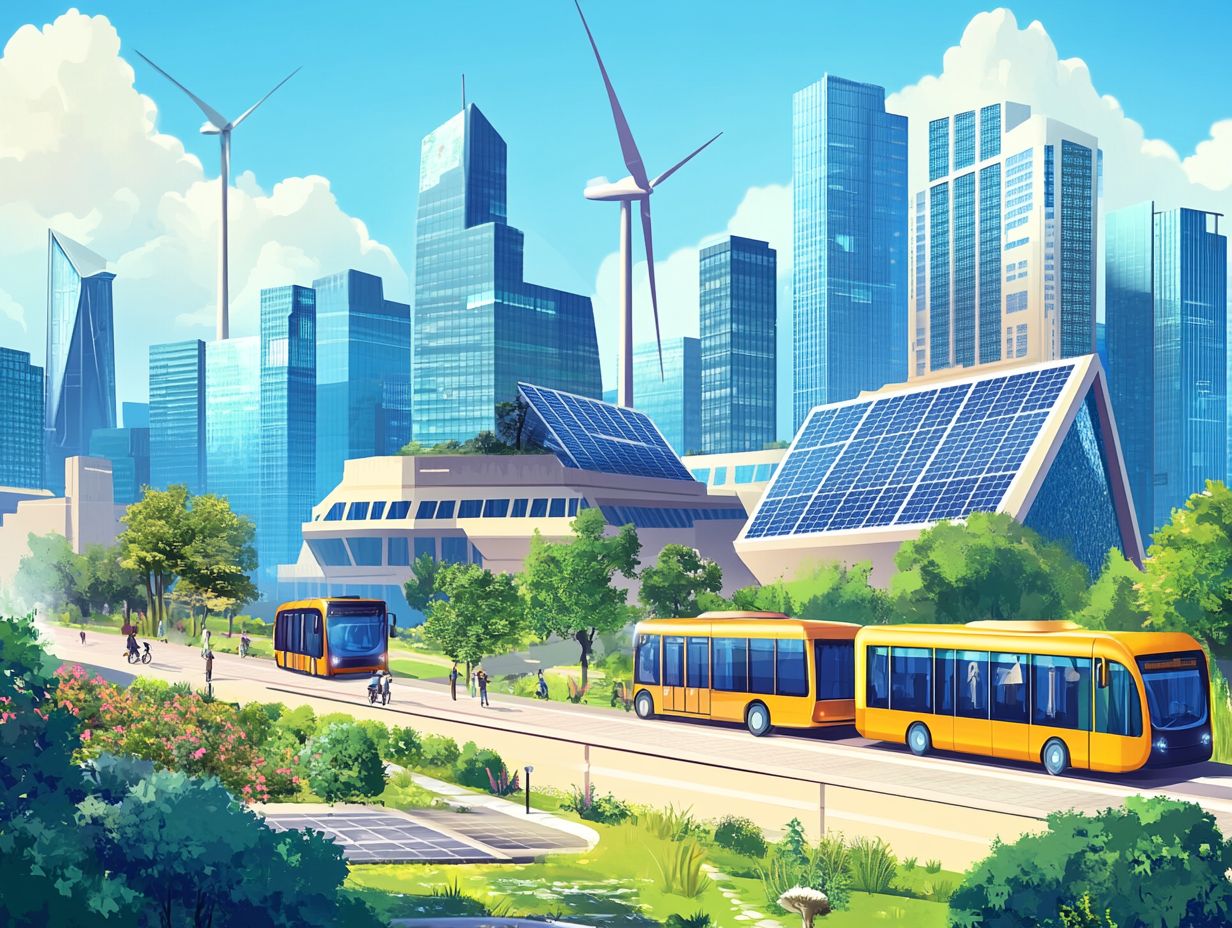
While electrification brings a wealth of benefits, it also introduces challenges and potential downsides to consider for promoting equitable and sustainable urban development, especially in vulnerable communities. Issues such as energy insecurity, higher upfront costs, and the need for significant infrastructure upgrades can hinder electrification initiatives aimed at reducing pollution and greenhouse gas emissions.
In low-income neighborhoods, the financial strain of transitioning to electric systems can be particularly burdensome. Households that already manage limited budgets may struggle to cover the initial expenses associated with new technologies.
A reliable utility infrastructure is crucial for successful electrification. However, many areas grapple with outdated systems incapable of supporting increased demand. This scenario may lead to rising energy costs for residents, widening existing economic disparities and discouraging community involvement during planning phases.
Historical patterns of environmental racism complicate these conversations. Marginalized groups often lack the necessary protections to ensure their voices are heard in decision-making processes.
Current Trends in Electrification
Exciting trends in electrification showcase innovative technologies transforming our urban spaces, especially in vibrant cities like New York City.
Initiatives such as the Clean Heat Program are gaining significant momentum, reflecting a commitment to sustainability. These groundbreaking advancements boost energy efficiency now while tackling the unique energy requirements of urban neighborhoods facing challenges like heat vulnerability and air quality.
Technologies and Innovations
Innovative technologies lead the charge in electrification. Advancements like heat pumps, smart grids, and electric vehicles play pivotal roles in enhancing urban sustainability and energy efficiency. These innovations do more than just cut carbon emissions; they also help lower utility bills for residents, making them essential to the future of urban energy systems.
Heat pumps cut down the use of fossil fuels for heating. This shift promotes a cleaner energy landscape. Smart grids, which allow real-time energy management, are essential for resilient urban infrastructure. They enable optimization of energy consumption based on demand and supply dynamics.
The rise of electric vehicles and their supporting infrastructure alleviates urban congestion. This development aligns seamlessly with economic development strategies, creating job opportunities in the burgeoning green tech sector. By addressing mobility issues and reducing pollution, these transformative technologies foster a more equitable energy landscape, ensuring that communities are not disproportionately affected by environmental changes.
Implementing Electrification in Urban Areas
Implementing electrification in urban areas demands meticulous planning and meaningful community engagement. It’s essential to tailor initiatives to the distinct energy needs of diverse neighborhoods, especially those vulnerable to environmental injustices.
By taking this thoughtful approach, we can ensure sustainable urban development and empower communities, amplifying the efficacy of solutions designed to reduce carbon emissions and enhance air quality.
What steps can we take together to ensure our urban future is sustainable for everyone?
Strategies and Best Practices
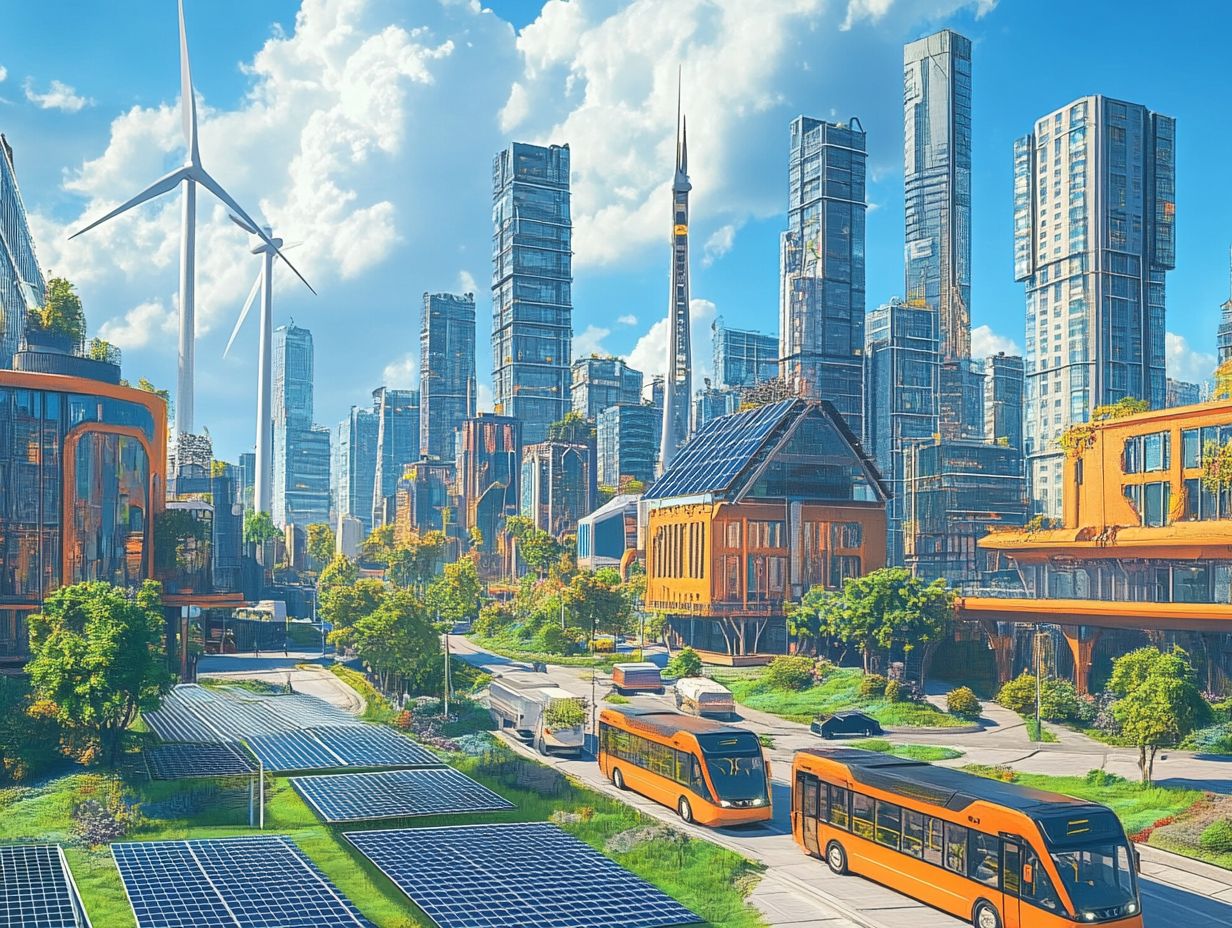
Effective strategies and best practices for electrification revolve around community engagement and thoughtful urban design. This ensures that your electrification efforts are inclusive and tailored to the energy needs of all residents. By prioritizing collaboration between the public and private sectors, you can develop targeted initiatives that reduce energy costs while enhancing overall sustainability.
Successful electrification initiatives actively engage residents through outreach and education programs. These efforts enlighten residents about the benefits of renewable energy, fostering a culture of energy consciousness. Innovative financing options, such as collaborations between government and businesses and microfinancing options, enable low-income households to invest in renewable technologies without hefty upfront costs.
Now is the time to create clear rules and guidelines that support renewable energy adoption. Urban design is also crucial; well-planned infrastructure promotes accessibility to electric services and enhances quality of life by supporting greener, more resilient communities.
Future Outlook and Potential for Sustainable Development
The future of electrification presents remarkable opportunities for sustainable development. Cities like New York City are strengthening their electric infrastructure and adopting renewable energy solutions.
With continued investment in electrification technologies, expect a significant reduction in carbon emissions alongside new avenues for economic growth and improved urban resilience.
This transformative shift paves the way for a cleaner environment while revitalizing communities and fostering a more sustainable and prosperous future.
Predictions and Possibilities
Predictions about the future of electrification suggest a significant shift towards greater adoption of clean energy technologies and enhanced urban resilience. This offers transformative possibilities for how you manage energy systems in your city. As electrification becomes more widespread, expect notable reductions in reliance on fossil fuel heating and improvements in air quality across various neighborhoods.
By embracing innovations such as solar power, wind energy, and energy storage solutions, municipalities can substantially lower energy costs for residents while actively combating climate change. This shift towards sustainability can also result in more job opportunities in green sectors, driving economic growth.
However, it s essential to navigate challenges like integrating existing infrastructure with new technologies and ensuring equitable access to these advancements. Cities should consider investing in comprehensive planning strategies that promote inclusivity and foster robust communication with the community, enhancing their capacity to adapt to future energy demands.
Frequently Asked Questions
What is electrification and how does it relate to urban sustainability?
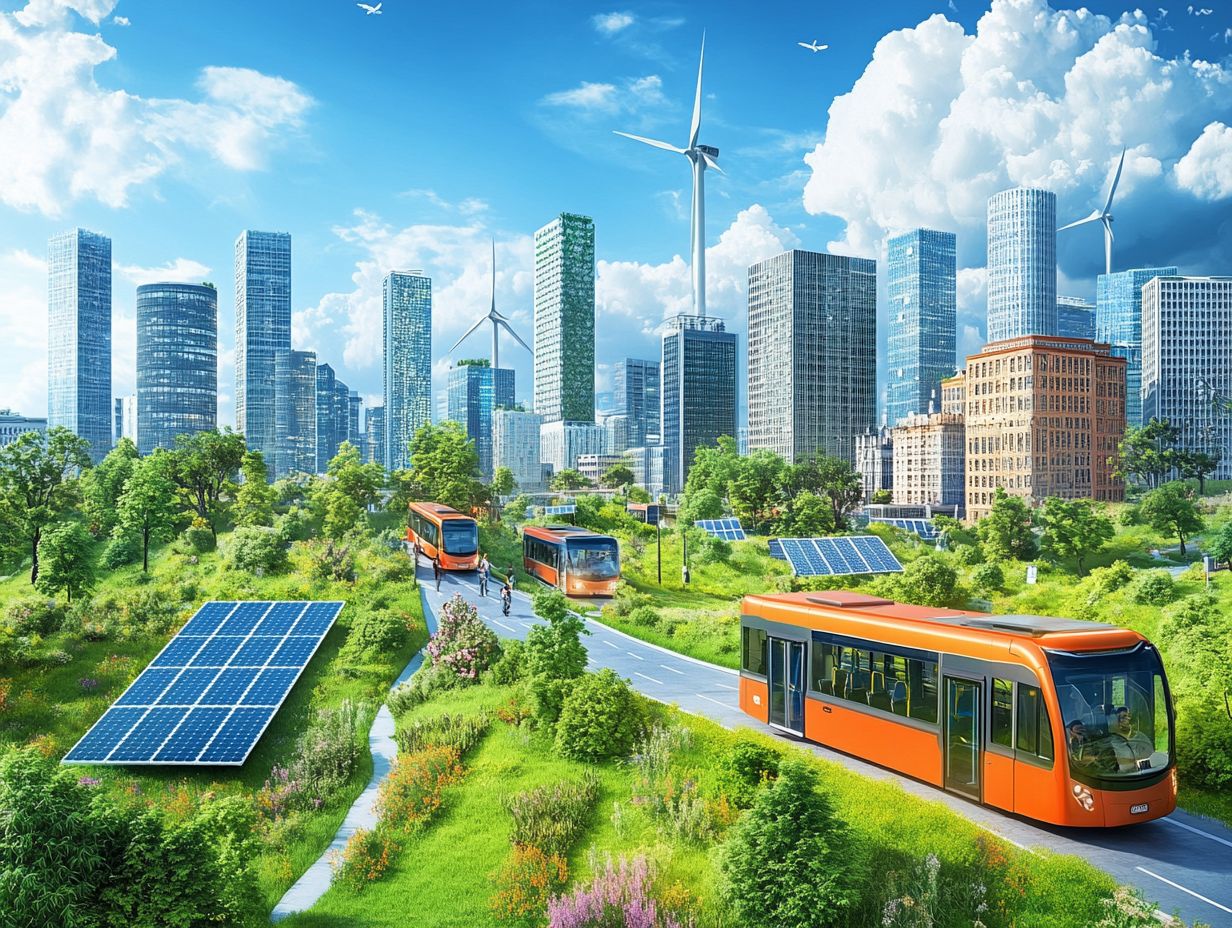
Electrification refers to the process of transitioning from non-electric power sources to electricity. In terms of urban sustainability, it involves reducing dependency on fossil fuels and promoting the use of clean energy sources. This approach, including insights on the future of electric vehicles in sustainable cities, can have positive effects on the environment and the overall sustainability of cities.
What are some examples of electrification in urban areas?
Examples of electrification in urban areas include the use of electric vehicles, electric-powered public transportation, and the installation of electric charging stations. Entire cities have implemented electrification strategies, such as converting streetlights to LED lights powered by renewable energy sources.
Explore how your city can lead the way in electrification!
How does electrification help reduce air pollution in cities?
Electrification cuts air pollution by replacing combustion engines with electric vehicles and public transport. This shift dramatically reduces vehicle emissions, a major source of air pollution and climate change.
Using clean energy for electricity further decreases pollution compared to traditional sources.
What challenges does electrification face in urban areas?
The initial cost of transitioning to electric systems can be a significant barrier. It demands substantial investment and collaboration among various stakeholders.
There are also concerns about the availability and reliability of clean energy sources.
How does electrification promote economic growth in cities?
Electrification creates new jobs in the renewable energy sector and lowers energy costs for businesses. Cities with clean energy strategies attract more investments and innovative companies.
What long-term benefits does electrification offer for urban sustainability?
Over time, electrification leads to lower greenhouse gas emissions and better air quality, benefiting public health. It also enhances energy independence and helps cities combat climate change.
This creates a more sustainable and resilient future for urban communities.


